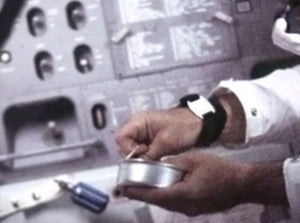

When you declare multiple pass, it's because you want the same geometry be drawn several times. Historically we have avoided frame buffer alpha as being exotic and /or slowĪ pass is a state set: all the OpenGl attribute of the geometry. But that can't handle transparent objects in the near scene - e.g., the windshield - without using either alpha bits in the frame buffer or doing a third pass for near transparent objects. I believe that the stencil test has been extremely fast for years. Passes Note We could use the stencil buffer without copying anything: render the near scene first, setting stencil bits, then enable the stencil test for the far scene.


KIZZI PRECISION FLIGHTGEAR CODE
Performance Note the way, the far camera being rendered before the near camera, I don't see how we can mask the outside view with the cockpit.The cockpit is the biggest potential gain, but due to the near camera - far camera thingy, I don't see how this can be done on the level of editing effect files - maybe a suitable edit of the camera group code can pull that off The second pass can be rendered before the first pass if the render bin numbers are inverted (the pass number has no rendering It is rendered twice, once with the objects of the same render bin than the first pass, once with the objects of the same render bin than the To summarize, all objects having a pass of render bin -1 are rendered before any object having a render bin 1. As each pass can have a render bin clause, all these duplicates are distributed in all the render bins before the draw stage. When we declare multiple passes in an effects, all objects affected by the effect are duplicated the number of passes mentioned in the effect during Then render bins are sorted by their numbers and drawn in that order. I'll need to check if any of the tileĬache code runs in the database pager thread, but don't think any does. Now, the code that actually loads the tiles - the database pager - does run asynchronously.
KIZZI PRECISION FLIGHTGEAR UPDATE
Never run at the same time: the cull traversal starts when the the update traversal has finished, and the next update traversal blocks on the cull andĭraw traversals. It is possible for the tile cache code, which runs in the update traversal, and the cull callback to run in different threads. Anyway, it's a good way to perform an action when an object is in view. If there is no cull callback, OSG does the traversal itself. The cull callback - if there is one - to traverse that object and perform finer grain culling.

If OSG determines that an object's bounding sphere intersects the viewing frustum, it calls The cull callback is called from OSG's culling traversal. The scene is first traversed to collect objects, see if they fit in the view frustum and put them in render bins. Of course, you can avoid to render it in the color buffer using write mask in one pass. Rendering a transparent object twice alter its transparency. Render bin numbers don't have to be positive. There is no tag during the first pass, so the depth buffer seems to be doing something by default - at least write and perhaps also lequal testing.
KIZZI PRECISION FLIGHTGEAR FULL
Each camera draws a slice of the scene using the full range of the Z buffer. The scene graph to work around this problem. The symptoms are flickering, jitter, and other unpleasantness.Tim Moore added a scheme to use several cameras within Z-buffered computer graphics that the precision of the Z-buffer deteriorates with huge near-far spreads and that the near plane distance has a much greaterĮffect than the far plane. FlightGear displays an enormous visual range, from 4 inches in front of your eyes out to 120km now and more in the future.


 0 kommentar(er)
0 kommentar(er)
